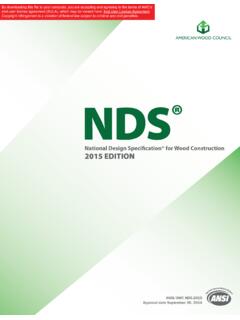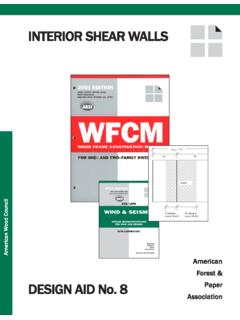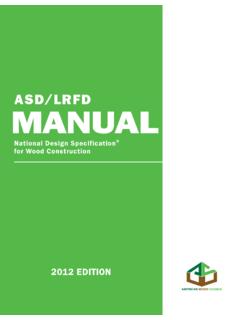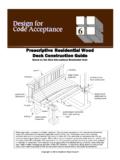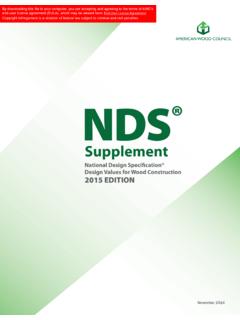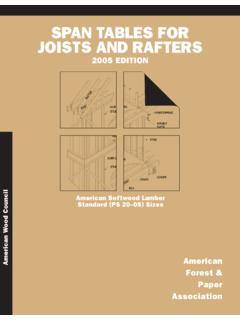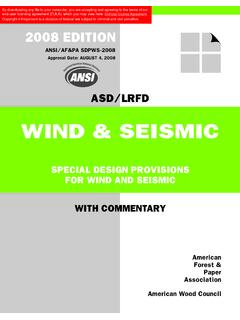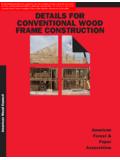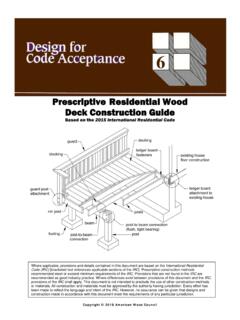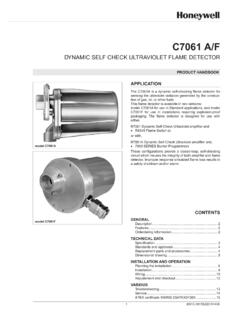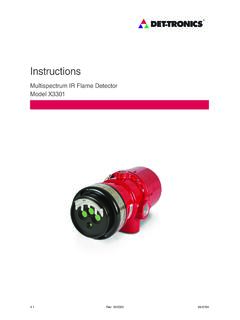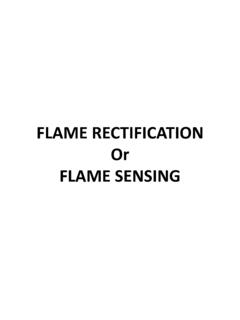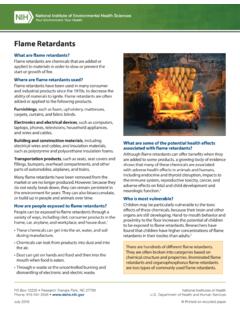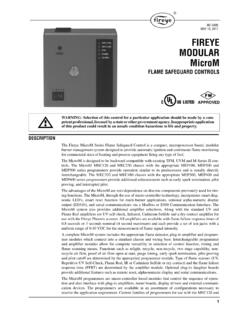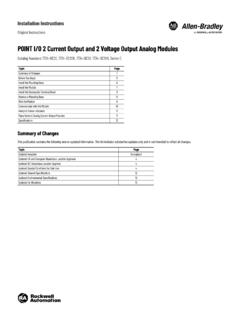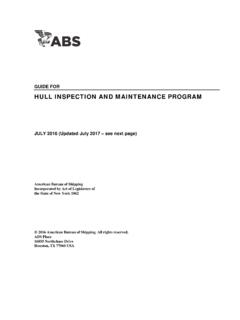Transcription of DCA1 Flame Spread Performance of Wood Products Used …
1 Copyright 2017 American Wood Council Flame Spread Performance of Wood Products Used for Interior Finish Wood and wood-based Products are widely used as interior wall, ceiling, and floor surfaces in all types of buildings. Appearance, acoustical qualities, and interior de-sign versatility have made wood surfaces highly de-sired by architects, designers, and building occupants. This publication briefly describes building code Flame Spread regulations on Products used in interior finish and presents Performance data on a range of wood Products .
2 Flame Spread Requirements Most code requirements for wood interior finish materials are expressed in terms of Flame Spread index numbers. These values are determined in a standard fire test which evaluates the surface burning character-istics of a material. Different maximum Flame Spread indices are permitted depending upon building occu-pancy, location of the material in the building, and the presence of sprinklers. Flame Spread indices in this publication are provided for wood materials that quali-fy for various building design requirements.
3 Test Method The standard fire test used to evaluate Flame Spread characteristics of wood building materials in the United States is ASTM E84, Standard Test Method for Surface Burning Characteristics of Building Mate-rials. The test procedure exposes candidate materials in a horizontal, rectangular tunnel that is 17-3/4" in width by 12" in height and 25' long. The tunnel is equipped with two gas burners at one end that direct a Flame onto the surface of the test material under a controlled air flow.
4 Flame spreads along the surface of the mate-rial as the test progresses. Distance of the Flame travel and the rate at which the Flame front advances during a 2 Flame Spread Performance OF WOOD Products USED FOR INTERIOR FINISH American Wood Council 10 minute exposure determine the calculated Flame Spread index (FSI). To provide standard conditions for each test, the tunnel is calibrated to an index of 0 for -inch fiber cement board and approximately 100 for the wood calibrant (23/32" red oak flooring conditioned to an average moisture content of 7 ).
5 Flame Spread indices for tested materials can range from 0 to over 1000. At various times throughout the history of ASTM E84, changes have been made to the standard, affect-ing aspects such as test specimen conditioning and calculation procedures used to determine FSI values from raw data. Because of these changes, FSI values for particular Products may change over time and it is not possible to directly calculate FSI values from some of the older ASTM E84 test data available; however, the classifications reported in these older test reports are deemed to be reasonable estimates.
6 Section of the 2015 International Building Code (IBC) defines classifications (Class A through Class C) for fire Performance and smoke development. Each class corresponds to a specified range of FSI values, as shown in the following table: Material Classification Based on FSI Class FSI Range A 0-25 B 30-75 C 80-200 Table of the IBC provides Flame Spread classification requirements for wall and ceiling finish-es, based on occupancy, location, and presence of au-tomatic sprinklers. Requirements for business and mercantile occupancy are as follows: Flame Spread Class Requirement for Business and Mercantile Occupancy Location Non-Sprinklered Sprinklered Exit Stairway A B Exit Corridor B C Rooms C C Wood Products Many interior finishes, including wood-based ma-terials, are hygroscopic, and their moisture content can affect Flame Spread Performance .
7 Conditioning of test specimens can play an important role in determining the classification of a specimen. ASTM E84 requires test specimens to be equilibrated under specified con-ditions of temperature and relative humidity ( 5 F and 50 5% relative humidity), which are within commonly accepted comfort ranges for interior spaces. Under these specified conditions, sawn wood Products equilibrate to a moisture content of approximately 8% to 10%, according to the US Forest Products Laborato-ry s Wood Handbook Wood as an Engineering Mate-rial.
8 Lumber, plywood, and other wood-based materials typically fall into Class B or Class C when tested and evaluated in accordance with ASTM E84. If the wood product is homogeneous, Flame Spread may be consid-ered nearly independent of material thickness at thick-nesses greater than 1/2". Flame Spread indices for a number of species of lumber are listed in Table 1. Flame Spread indices for plywood, oriented strand board (OSB), particleboard, and medium density fiberboard (MDF) are listed in Table 2. For Products such as softwood and hardwood plywood, the arrangement and type of components may also influence surface Flame Spread .
9 Some such Products are described by face species and core com-position in Table 2. All ratings are based on the ASTM E84 test method. As can be seen from the listed indices, most tested wood Products have a Flame Spread index less than 200, making them acceptable under current building codes for a wide range of interior finish uses. Flame Spread indices for a range of proprietary wood-based interior finish materials, such as factory-applied over-lay finishes, are available from the manufacturer.
10 Commercially available fire retardant treatments for wood and panel Products can reduce Flame Spread per-formance to Class A. Such Products typically carry a label indicating their rating classification. A smoke-developed index was also measured for some of the wood Products listed in Table 1 and Table 2. This index also has a value of approximately 100 for the wood calibrant. None of the Products tested and presented in this document have a smoke-developed index exceeding the code-specified limit of 450.
